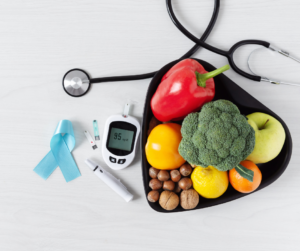A New Way To Celebrate Heart Health Month
In honor of February being American Hearth Month, as well as the month in which Valentine’s day takes place, I decided to listen to my heart. I’ve been a vegetarian for over 8 years now but I’ve been toying with the idea of going vegan for almost a year now. As you know, vegetarians abstain from eating anything in which an animal has to be killed (ie avoiding meat but eating eggs and dairy) whereas a vegan abstains from eating or using anything that came from an animal, alive or dead (so no meat, dairy, eggs, or even honey). My motivation for the switch is a mix of health and ethical reasons. I’ll just leave it at that since it would distract from the main purpose of this article.
Before we go any further, don’t worry. I’m not a tyrannical non-meat-eater that will make you feel guilty for enjoying your hamburger. I have never enjoyed meat but am aware that I am very much in the minority. And after entering into a field that recognizes the power of individuality, I strongly believe “to each his own”.
Anyway, what’s held me back from making this transition has mainly been fear: fear of giving up certain foods; fear of mistakenly ingesting an animal product and feeling guilty about it later; fear of not being able to go out to eat with my friends because there are no vegan options; fear of being overwhelmed by how many products are tested on or come from some part of an animal. So, as a compromise, I decided to become a vegan in diet for the month of February as a way to listen to the inner wisdom in my heart.
I’m now on day 3 of being vegan and surprisingly, it hasn’t been that challenging since, as a long-time vegetarian with food allergies to dairy and eggs, 95% of my home-cooked meals are vegan anyway. However, as a way to expand my recipe bank, I’ve been looking into new vegan recipes and resources. And all I can say is WOW! It is unbelievable how many websites or meal plans have people either eating a ridiculous amount of processed carbs and/or soy products every day.
The most offensive offender that I’ve stumbled upon so far is PETA (People for the Ethical Treatment of Animals). How can they want a vegan America yet offer such a nutritionally-devoid 2 week meal plan to encourage people to convert? Does PETA not know you can meet your daily protein requirements without fake meat/processed soy? With the growing epidemic of chronic disease in America, nutrition is a key factor in curbing this trend, so if you’re going to promote such an extreme lifestyle change, why not offer a healthy 2 week meal plan?
 My shock with PETA wasn’t even what inspired me to create this lovely vegan protein sources chart. And please note how few soy sources I included and yet, what a large (yet not entirely exhaustive) list it is. What inspired this chart creation was the response I received to a Tumblr post regarding PETA’s soy fetish. A uninformed fellow veg posted in response “Someone needs to tell them we get our protein from sources such as kale, spinach… Ect.” Umm….
My shock with PETA wasn’t even what inspired me to create this lovely vegan protein sources chart. And please note how few soy sources I included and yet, what a large (yet not entirely exhaustive) list it is. What inspired this chart creation was the response I received to a Tumblr post regarding PETA’s soy fetish. A uninformed fellow veg posted in response “Someone needs to tell them we get our protein from sources such as kale, spinach… Ect.” Umm….
Yes, vegetables do contain protein. However, you get more bang for your buck (as far as protein is concerned) from beans, nuts, and seeds. So, if you follow the governments guidelines for daily protein intake for an adult (let’s just average it out between men and women and say 50 grams/day), if you wanted kale to be your main source of protein,you would have to eat 25 cups of kale per day to meet your requirement! I mean, don’t get me wrong, I love kale but I don’t love kale that much. Also, don’t forget that nuts and seeds have fats, which you need to absorb all those wonderful fat-soluble vitamins. And everything in moderation is always a good rule of thumb when it comes to, well, life.
Now before I sound too high-and-mighty, I will point out that I definitely did not start out the vegetarian chapter of my life as a healthy vegetarian. I would call my former vegetarian self, pre-naturopathic medical school, a carb-atarian based on the high amount of carbs I would consume instead of vegetables. So I do not blame this fellow veg for being so misinformed. And no wonder they are misinformed when the go-to, publicity-savvy vegan resource doesn’t even have a healthy sample diet to follow!
So thanks to PETA and my innocent fellow veg friend for inspiring me to make this chart! I’m sure my future patients, from the hard-core vegan to the meat-eater trying meatless Mondays for the first time, will find this useful one day.
What’s your favorite non-meat source of protein? Or what new sources of protein will you try to add thanks to my lovely chart?



I definitely need to start adding more varieties of beans to my diet. This looks like a good place to find some choices.
I’m glad you found this article helpful 🙂